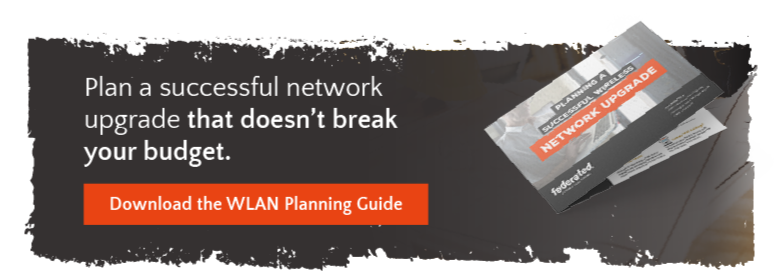
Cloud Technology is seemingly everywhere these days – who hasn’t helped their Mom upload embarrassing family photos to iCloud or rescued an abandoned to-do list from Google Drive? Retailers are catching on too and shifting to cloud technologies in droves, though it’s not because they want to save that photo of you and Uncle George at the Renaissance Festival.
The global pandemic and resulting supply chain issues forced many retailers to reimagine how they do business. Cloud technologies have given them the power to manage data in real-time, from anywhere, making them more agile, resilient, efficient, scalable, and innovative – all critical in today’s business world.
“Cloud is the powerhouse that drives today’s digital organizations,” says Sid Nag, research vice president at Gartner Inc., a leading business research organization. Gartner forecasts worldwide end-user spending on public cloud services will reach $600 billion in 2023. Like other sectors, retailers are investing and seeing the benefits – quicker data-driven decisions, more efficient inventory and supply chain management, reduced operating costs, and improved security.
But the transformation doesn’t happen overnight. Moving to a cloud-based infrastructure takes a lot more time and planning than uploading the family photo album into iCloud. Here are a few things to consider
Managing the Costs of Cloud Technologies
At first glance, cloud cost savings may seem like a no-brainer – you pay a monthly service fee and no longer need to maintain in-house network and server equipment. But monthly cloud costs can escalate if left unattended, so it’s important to develop a strategic migration and cost management plan before you get started.
To help mitigate risks, move applications to the cloud in stages, testing smaller applications first. You may migrate applications by business function or opt for a hybrid in-house/cloud model. Whatever you decide, it’s important to back it up with a strategy and get agreement from key stakeholders. You should also factor in potential costs to update legacy applications. To successfully operate in cloud infrastructure, older applications may require upgrades or replacement.
Then there’s ongoing cost management. Cloud services come with a wide variety of pricing options, so larger providers, such as Microsoft Azure and Amazon Web Services, offer pricing calculators to help determine monthly costs based on your products, services, and usage.
Instead of putting all eggs in one basket, many retailers are choosing a multi-cloud approach to maintain flexibility. If you’re locked in with a sole provider and the relationship fizzles, migration can be expensive and time-consuming. By working with a mix of vendors, you gain access to a broader range of services, maintain your negotiating power, and boost your disaster recovery capabilities.
Before you jump in, however, consider these potential challenges:
- Do you have in-house personnel to manage multiple platforms, or will you need to train or hire new people who specialize in each system?
- How will you manage security for multiple platforms, each with potentially different policies?
- How will you monitor the performance of applications spread across multiple clouds?
Finding Your Competitive Advantage
Retail cloud technologies give you the tools to maximize your competitive advantage. Think about your company’s key differentiators – excellent customer service, fast shipping, always on-trend? Once you identify these attributes, you can build a cloud infrastructure to support them.
With the cloud, your employees can take quick action to optimize the customer experience since they have access to real-time data from any location, whether it’s the availability of stock, order tracking, or other customer and supplier information.
You can deploy new applications faster. Say you want to analyze buying behaviors in a new way. Cloud environments give you the flexibility to move quickly, respond to changes in the marketplace, and maintain your competitive edge.
Working with the Data
Collecting big data is one thing, it’s what you’re able to do with the data that counts.
Many cloud platforms offer advanced analytics tools. Powered by machine learning or artificial intelligence, they can help you understand and predict consumer behaviors, such as how customers use a rewards program or how they respond to product suggestions. These analytics can better inform your decisions about optimizing and personalizing customer interactions.
Analytics tools can guide other important decisions. They can build inventory forecasting models to reduce product overstocking or understocking. They can predict order pick-up times and delays. When consumers order products online, analytics tools can identify availability at nearby store locations and incentivize customers to pick up items in-store. The possibilities are endless.
Powering Physical Locations
Many retailers have stepped up their game to attract more consumers to their brick-and-mortar locations, offering in-store digital technologies powered by edge computing.
Edge computing combined with a cloud infrastructure provides the security and redundancy to power a variety of mobile applications and high-tech capabilities across many locations:
- Digital point-of-sale devices
- Contactless payment
- Self-checkout
- Curbside checkout
- Product finder apps
- Smart shelves
Many retailers are also moving toward an omnichannel approach. Research from Global Data shows more than 75% of retailers plan to integrate online and in-store shopping for a seamless shopping experience. Cloud and edge computing will no doubt play an integral part in this transformation.
Work at a retail company that’s navigating its transition to cloud technology? We can help! Let the enterprise network experts take a peek underneath your company’s network hood.


